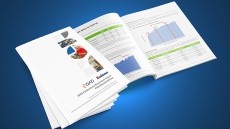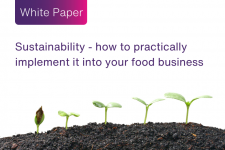Weighty answers from new packaging research
“As a major player in the provision of food packaging, it is important to us that our customers have a responsible packaging format and the IFEU (Institute of Energy and Environmental research) study has confirmed that using carton packaging saves CO2 emissions and fossil resource consumption by up to 60 per cent,” a company spokesperson told FoodProductionDaily.com.
Carton packs use significantly fewer fossil resources than food metal cans, glass jars and pouches because of their high proportion of paper board which is obtained from renewable wood, reported the study.
Michael Hecker, the company’s head of group environment, health and safety said: “Our objective was to gain well-founded information on the environmental performance of the most commonly used packaging for ambient food products. In addition to our aseptic and retortable carton packs, the analysis looked at food metal cans, glass jars and retortable pouches.”
Environmental impact
The life-cycle assessment study examined the environmental impact of each stage of the packaging process, from the extraction and processing of raw materials, to the package manufacturing process, transportation, filling, distribution and disposal after use. The environmental impact was measured in two ways – resource consumption of fossil raw materials and other natural resources and substance emissions such as carbon dioxide.
The aseptic and the retortable carton packaging systems offered the best results in all environmental impact categories, with the exception of the ‘use of nature’ category. That reflects the wood used for the unprocessed paper board, which is a renewable fossil resource obtained from sustainable managed forests.
“We felt that it was becoming urgent for such a comparative study to be conducted due to the increasing globalisation of the food and retail industry,” said the spokesperson.
“We listened to the feedback from our customers and it was clear that they wanted a packaging solution that minimised the environmental impact yet maximised the product quality and accessibility.”
Tom Kirchen, the company’s global food manager said: “Reducing CO2 emissions and saving fossil fuel resources in packaging are becoming increasingly vital. It is becoming more important that decisions on packaging are made of the basis of substantiated analysis that considers the environmental impact of packaging along the entire life cycle.”









